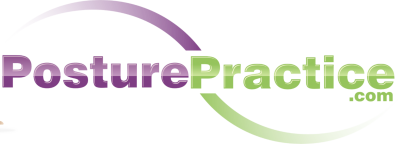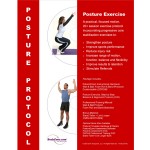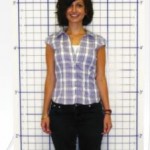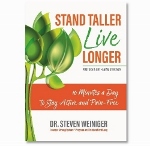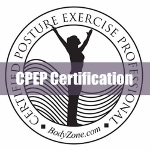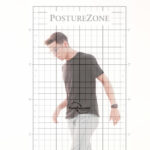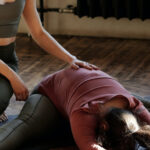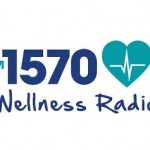Posture Principles in an Acute Care Setting
How 5 Posture Principles and StrongPosture Helps my Patient Base
Motion and movement are very important for patients in the acute care setting. StrongPosture® is a skill set I use to address this with my patient base. The patients I see that are most challenging but benefit the most are those that have had prolonged bed rest due to their medical complications. These patients’ challenges mostly impact range of motion. StrongPosture® protocols include initiating pelvic tuck and diaphragmatic breathing during sessions with these patients as a starting point for improved movement.
“Breathing is the most important motion,” Dr. Steven Weiniger
“Breathing is the most important motion” and these techniques can easily be initiated with all our patients even at the lowest level and even when ventilated. As we work with the patient from bed mobility to sitting, we can engage more of their core in sitting balance.
Posture Principles in an Acute Care Setting
Balance in sitting can be challenging for many of the patients in my caseload. In the hospital, I float around to the ICU, cardiac, neuro, orthopedic, medical, surgery, and other patients. A great thing about acute care is our ability to be creative in our environment. Since we don’t have a clinic or gym to go to, we have to use what we have available in the patient’s room. My colleagues and I improvise ways to create a flat surface for the patient’s back while they are sitting with their feet flat on the floor.
We’ll perform a StrongPosture wall lean and use the same phrasing of arching and tucking including the diaphragmatic breathing. Some of our patient base is wheelchair dependent and suffer from pain and poor breathing due to their posture and with the education of StrongPosture we can assist them to “stand taller live longer.” We also have higher level patients who frequently come to the ER for back pain and we use these techniques to look at their posture and educate them on exercises to provide relief.
Retraining Beneficial Patterns
With technological devices that can help patients in stance, we can assist people who have had prolonged bed rest to achieve better positioning to assist their posture. While the StrongPosture stork might not be appropriate when we first start working with these patients, other BAM Alignment exercises can be started and progressed to reinforce proper posture that can be continued in their care. These techniques train my patients to change their bad habits and move into easier and more beneficial patterns.
Patterns are hard to break when they are learned habits. People find that they save energy and have less pain with these posture exercises and begin to adopt better habits. Patients that have had prolonged bed rest usually develop patterns that are not good for their posture and their breathing. Retraining new positive patterns shows patients that their compensation techniques to avoid pain are not needed.
Inspiring Patient Compliance
Compensation is common for patients when they’ve completed their physical therapy sessions and can negatively affect the body structurally and physiologically. StrongPosture helps break improper compensation habits because of the strong emphasis on focus and control. For example, the sit-to-stand demonstration teaches patients to build a strong core, while decreasing the chance of falls. Additionally, patients see the value when they find they can breathe easier and perform tasks more easily.
Adaptations that cause the body to change over time can cause contractures and postural issues that lead to other medical problems. Therapists should incorporate evidence-based protocols which identify and address these longer term changes. For example, some patients require stair training prior to going home, and at that high level, incorporating the StrongPosture exercise with use of foam roll can not only strengthen their core but possibly prevent a physiological response such as increased respiratory rate or heart rate. Demonstrating to patients that they do not need to accept their body adaptation from having been bed bound is a powerful motivator to follow through with prescribed exercises at home.
There is great value in incorporating StrongPosture in the acute care setting whether it’s for employee health or a high or low-level patient. Even patients with medical complications or prolonged bed rest can accomplish an individualized plan to reap the benefits from having a strong posture.
Author: Evelyne Orlander, PT, DPT, CPEP is a physical therapist working in Hospital Based Rehab at Tampa General Hospital.
(1) 5 Posture Principles, Motion, Balance, Patterns, Compensation, Adaptation, Steven Weiniger, BodyZone, 2000.
(2) StrongPosture Rehab Protocol Training Manual, S. Weiniger, BodyZone Press, (2000, 2016).
To learn the StrongPosture® program get the Posture Rehab Exercise Program and take the online CE course. Take it to the next level with CPEP® Posture Specialist Certification!
